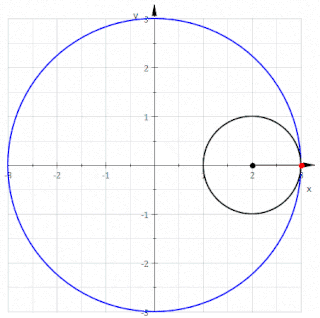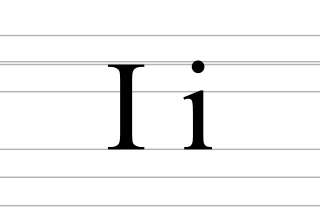
Area is the measure of a region's size on a surface. The area of a plane region or plane area refers to the area of a shape or planar lamina, while surface area refers to the area of an open surface or the boundary of a three-dimensional object. Area can be understood as the amount of material with a given thickness that would be necessary to fashion a model of the shape, or the amount of paint necessary to cover the surface with a single coat. It is the two-dimensional analogue of the length of a curve or the volume of a solid . Two different regions may have the same area ; by synecdoche, "area" sometimes is used to refer to the region, as in a "polygonal area".

A cross is a compound geometrical figure consisting of two intersecting lines, usually perpendicular to each other. The lines usually run vertically and horizontally. A cross of oblique lines, in the shape of the Latin letter X, is termed a saltire in heraldic terminology.

D, or d, is the fourth letter of the Latin alphabet, used in the modern English alphabet, the alphabets of other western European languages and others worldwide. Its name in English is dee, plural dees.
Digamma or wau is an archaic letter of the Greek alphabet. It originally stood for the sound but it has remained in use principally as a Greek numeral for 6. Whereas it was originally called waw or wau, its most common appellation in classical Greek is digamma; as a numeral, it was called episēmon during the Byzantine era and is now known as stigma after the Byzantine ligature combining σ-τ as ϛ.
Epsilon is the fifth letter of the Greek alphabet, corresponding phonetically to a mid front unrounded vowel IPA:[e̞] or IPA:[ɛ̝]. In the system of Greek numerals it also has the value five. It was derived from the Phoenician letter He . Letters that arose from epsilon include the Roman E, Ë and Ɛ, and Cyrillic Е, È, Ё, Є and Э. The name of the letter was originally εἶ, but it was later changed to ἒ ψιλόν in the Middle Ages to distinguish the letter from the digraph αι, a former diphthong that had come to be pronounced the same as epsilon.
The Coptic script is the script used for writing the Coptic language, the most recent development of Egyptian. The repertoire of glyphs is based on the uncial Greek alphabet, augmented by letters borrowed from the Egyptian Demotic. It was the first alphabetic script used for the Egyptian language. There are several Coptic alphabets, as the script varies greatly among the various dialects and eras of the Coptic language.
Although people in many parts of the world share common alphabets and numeral systems, styles of handwritten letterforms vary between individuals, and sometimes also vary systematically between regions.

Lucky Charms is a brand of breakfast cereal produced by General Mills since 1964. The cereal consists of multi-colored marshmallows and pieces of shaped pulverized oat, each resembling one of several objects or symbols associated with good luck. The packaging and marketing features a leprechaun mascot, Lucky.
Tau is the nineteenth letter of the Greek alphabet, representing the voiceless dental or alveolar plosive IPA:[t]. In the system of Greek numerals, it has a value of 300.
Pi is the sixteenth letter of the Greek alphabet, meaning units united, and representing the voiceless bilabial plosive IPA:[p]. In the system of Greek numerals it has a value of 80. It was derived from the Phoenician letter Pe. Letters that arose from pi include Latin P, Cyrillic Pe, Coptic pi, and Gothic pairthra (𐍀).
Koppa or qoppa is a letter that was used in early forms of the Greek alphabet, derived from Phoenician qoph (𐤒). It was originally used to denote the sound, but dropped out of use as an alphabetic character and replaced by Kappa (Κ). It has remained in use as a numeral symbol (90) in the system of Greek numerals, although with a modified shape. Koppa is the source of Latin Q, as well as the Cyrillic numeral sign of the same name (Koppa).
Sampi is an archaic letter of the Greek alphabet. It was used as an addition to the classical 24-letter alphabet in some eastern Ionic dialects of ancient Greek in the 6th and 5th centuries BC, to denote some type of a sibilant sound, probably or, and was abandoned when the sound disappeared from Greek.

In geometry, a hypocycloid is a special plane curve generated by the trace of a fixed point on a small circle that rolls within a larger circle. As the radius of the larger circle is increased, the hypocycloid becomes more like the cycloid created by rolling a circle on a line.

Be is a letter of the Cyrillic script. It commonly represents the voiced bilabial plosive, like the English pronunciation of ⟨b⟩ in "ball". It should not be confused with the Cyrillic letter Ve (В в), which is shaped like Latin capital letter B but represents the voiced labiodental fricative or the voiced bilabial fricative. The Cyrillic letter Б (Be) is romanized using the Latin letter B.

In geometry, a deltoid curve, also known as a tricuspoid curve or Steiner curve, is a hypocycloid of three cusps. In other words, it is the roulette created by a point on the circumference of a circle as it rolls without slipping along the inside of a circle with three or one-and-a-half times its radius. It is named after the capital Greek letter delta (Δ) which it resembles.

Pe is a letter of the Cyrillic script.
An oval is a closed curve in a plane which resembles the outline of an egg. The term is not very specific, but in some areas it is given a more precise definition, which may include either one or two axes of symmetry of an ellipse. In common English, the term is used in a broader sense: any shape which reminds one of an egg. The three-dimensional version of an oval is called an ovoid.
A Picard horn, also called the Picard topology or Picard model, is one of the oldest known hyperbolic 3-manifolds, first described by Émile Picard in 1884. The manifold is the quotient of the upper half-plane model of hyperbolic 3-space by the projective special linear group, . It was proposed as a model for the shape of the universe in 2004. The term "horn" is due to pseudosphere models of hyperbolic space.
Recession shapes or recovery shapes are used by economists to describe different types of recessions and their subsequent recoveries. There is no specific academic theory or classification system for recession shapes; rather the terminology is used as an informal shorthand to characterize recessions and their recoveries. The most commonly used terms are V-shaped, U-shaped, W-shaped, and L-shaped recessions, with the COVID-19 pandemic leading to the K-shaped recession. The names derive from the shape the economic data – particularly GDP – takes during the recession and recovery.

I, or i, is the ninth letter and the third vowel letter of the Latin alphabet, used in the modern English alphabet, the alphabets of other western European languages and others worldwide. Its name in English is i, plural ies.













